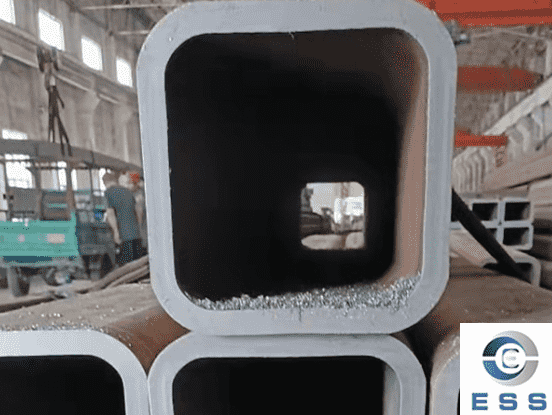Heat treatment process of cold-drawn
seamless steel pipe

Cold drawn steel pipe is one of the most widely used steel pipes in daily life. Cold-drawn steel pipes are whole steel pipes produced by drawing, extrusion, perforation and other methods. They have no seams on the surface and are hollow cross-sections in circular, square and other shapes. It is made of steel ingots or solid tube blanks that are perforated to make capillary tubes, and then cold drawn.
In addition to general steel pipes, low and medium pressure boiler tube, high pressure boiler tube, alloy steel pipes, stainless steel pipes, petroleum cracking pipes, and other steel pipes, cold-rolled (drawn) seamless steel pipes also include thin-walled carbon steel pipes, alloy thin-walled steel pipes, Stainless thin-walled steel pipes, special-shaped steel pipes. The outer diameter of hot-rolled seamless pipes is generally greater than 32mm, and the wall thickness is 2.5-75mm. The inner diameter of cold-rolled seamless steel pipes can be up to 6mm, and the wall thickness can be up to 0.25mm. The outer diameter of thin-walled pipes can be up to 5mm, and the wall thickness is less than 0.25mm. Rolling has higher dimensional accuracy than hot rolling.
The general heat treatment equipment process for cold drawn steel pipes is as follows:
1. Cold drawn steel pipe quenching and tempering: refers to the composite heat treatment process of quenching and tempering steel or steel parts. Steel used for quenching and tempering treatment is called quenched and tempered steel. It generally refers to medium carbon structural steel and medium carbon alloy structural steel.
2. Cold drawn steel pipe annealing: common annealing processes - recrystallization annealing, stress relief annealing, spheroidizing annealing, complete annealing, etc. The purpose of annealing: mainly to reduce the hardness of metal materials, improve plasticity, to facilitate cutting or pressure processing, reduce residual stress, improve the uniformity of the structure and composition, or prepare the structure for subsequent heat treatment, etc.
3. Cold drawn steel pipe quenching: Common quenching processes include salt bath quenching, martensitic graded quenching, bainite isothermal quenching, surface quenching and partial quenching, etc. The purpose of quenching is to obtain the required martensitic structure of the steel parts, improve the hardness, strength and wear resistance of the workpiece, and prepare the structure for subsequent heat treatment.
4. Normalizing cold drawn steel pipes: The purpose of normalizing is mainly to improve the mechanical properties of low carbon steel, improve machinability, refine grains, eliminate structural defects, and prepare the structure for subsequent heat treatment.
5 Tempering of cold-drawn steel pipes: Common tempering processes include low-temperature tempering, medium-temperature tempering, high-temperature tempering and multiple tempering, etc. The purpose of tempering: mainly to eliminate the stress generated by the steel parts during quenching, so that the steel parts have high hardness and wear resistance, as well as the required plasticity and toughness.
Read more: Din en 10220 seamless steel pipes













 Eastern Steel Manufacturing Co.,Ltd not only improve product production and sales services, but also provide additional value-added services. As long as you need, we can complete your specific needs together.
Eastern Steel Manufacturing Co.,Ltd not only improve product production and sales services, but also provide additional value-added services. As long as you need, we can complete your specific needs together.










